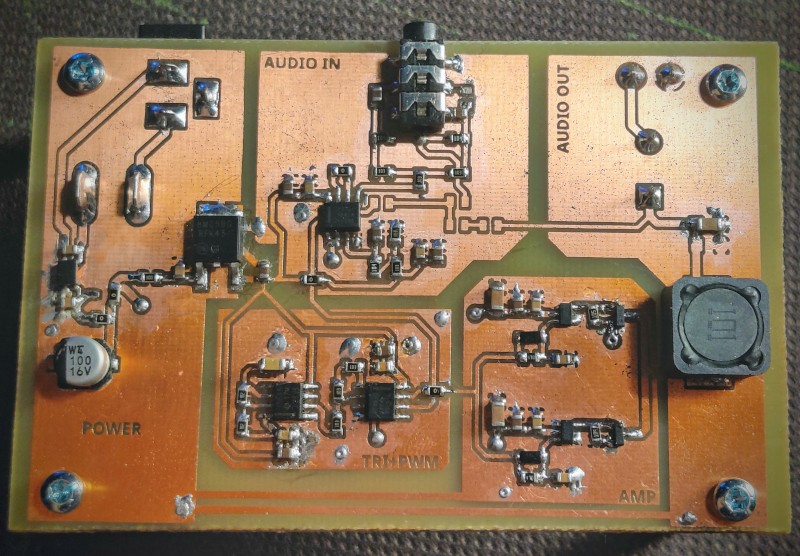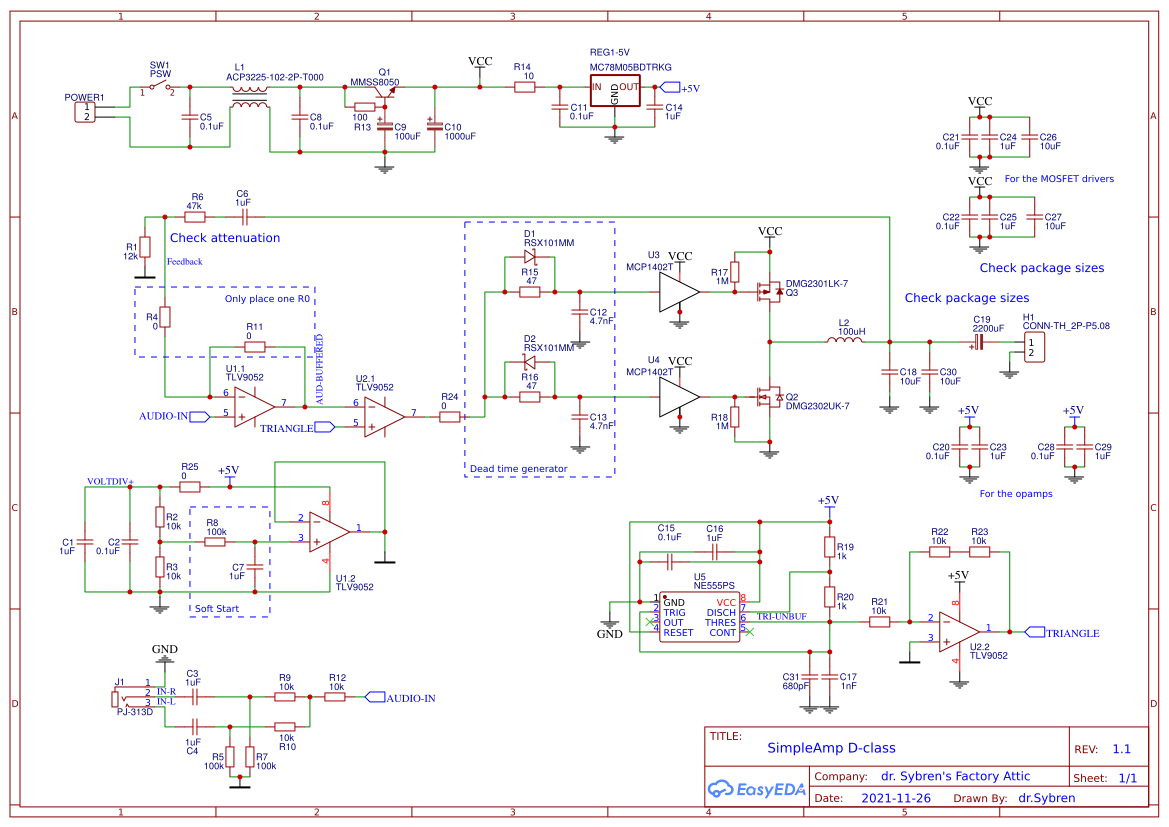Class D Amplifier Prototype
The amplifier we use for the TV is getting old, and an annoying 50 Hz hum is finding its way to the speakers. So, of course, I decided to make my own amplifier. I’ve done that before, with a class B design, and this time I wanted to do something different.

This amplifier is a Class D design, which means that it transforms the audio signal into a high-speed (200 kHz) digital signal. It then amplifies that digital signal; because of the digital nature, the amplifier MOSFETs will be either fully on or fully off. Since either no current is flowing (100% off) or the MOSFET has practically no resistance (100% on), there is very little heat produced, making the design energy-efficient.

This is just a prototype that outputs mono audio. It’s there for me to learn about its behaviour (it’s different on a PCB compared to the earlier breadboard prototype I made) before I copy-paste the components to the final 2.1 (stereo + subwoofer) version.
Above you see the circuit diagram. I’ve shared the design under the GPL license, including the PCB layout, on Open Source Hardware Lab.